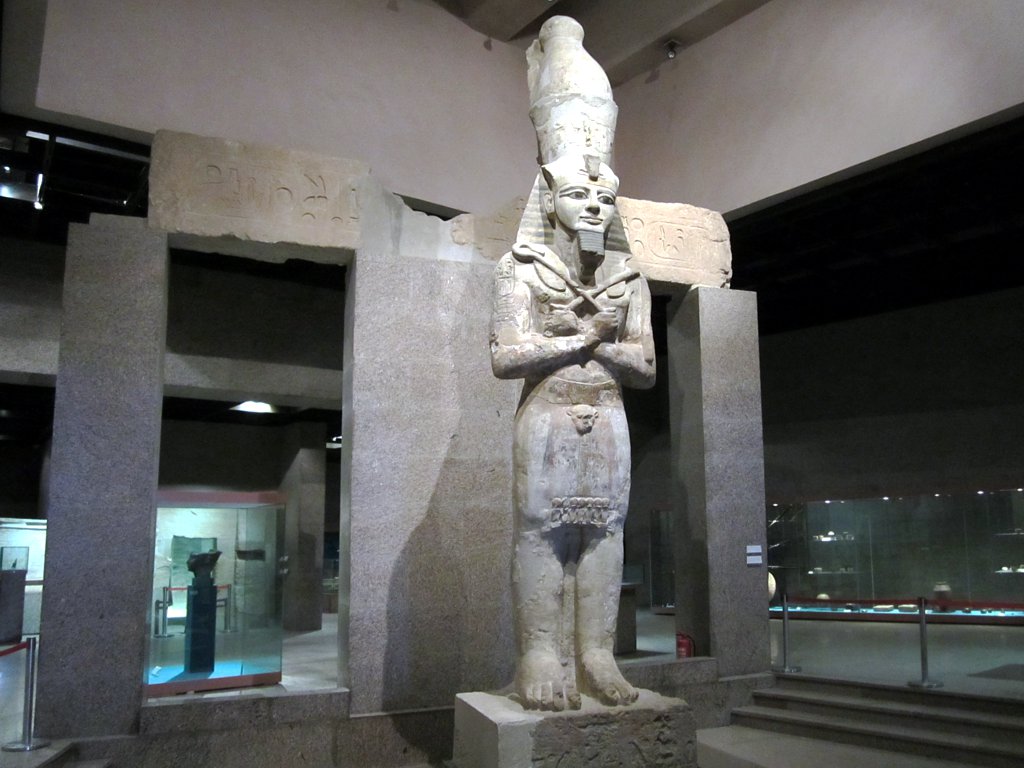Key Sections and Masterpieces
The first section of the museum takes you back to the origins of Nubian civilization, highlighting tools, pottery, and hunting artifacts that date back over 10,000 years. This area provides insights into the early life and survival skills of ancient Nubians, displaying stone tools, pottery shards, and the earliest forms of art found in the region.
Nubia’s interaction with ancient Egypt was significant, and this section covers the period when Nubia was under Egyptian rule, as well as the cultural exchanges between the two civilizations. Key exhibits include statues, jewelry, and pottery with intricate designs, as well as items that were once used in Nubian temples. Notable pieces include statues of Nubian pharaohs, like the statue of Ramses II, who ruled over Nubia, and the stela of King Senusret III, which commemorates Egyptian campaigns into Nubia.
This section focuses on the Kingdom of Kush, a powerful Nubian kingdom that ruled over much of the Nile Valley from around 800 BCE to 400 CE. Visitors can see impressive statues of Nubian rulers, including the famous head of Taharqa, one of the “Black Pharaohs” of Egypt who ruled during the 25th Dynasty. There are also detailed models of pyramids and temples from the region, reflecting the unique architectural style of the Kushite civilization.
With the spread of Christianity, Nubia developed a unique Christian culture, which is highlighted in this section. Visitors can view ancient manuscripts, frescoes, and church artifacts, showcasing the region’s transformation from polytheistic religions to Christianity. The beautiful wooden crosses and Coptic carvings are some of the section’s key highlights.
The final historical section showcases the Islamic period, starting from the 14th century. This area displays items such as ceramics, coins, and metalwork, showing the influence of Islamic culture on Nubian art and lifestyle. The collection includes traditional jewelry, swords, and ornate doors, reflecting the craftsmanship and daily life of Nubians during this era.
The Ethnographic section is dedicated to the modern aspects of Nubian culture. It presents the vibrant life, traditions, and customs of Nubians through photographs, traditional costumes, musical instruments, and household items. The section captures the essence of Nubian music, dance, festivals, and crafts, helping visitors understand how these traditions have been preserved and adapted over the centuries.
Outside the main building, there is an open-air exhibit that features reconstructions of traditional Nubian houses and a lush garden with native plants. Visitors can walk through these recreated structures to see how ancient and modern Nubians lived, with displays of furniture, cooking tools, and artifacts that show the blend of natural beauty and cultural heritage.
Statue of Ramses II: An imposing piece reflecting the era when Egypt ruled Nubia.
Head of Taharqa: A representation of one of the Nubian rulers who became Pharaoh of Egypt.
Stela of King Senusret III: Depicting Egyptian military expeditions into Nubia.
Ancient Pottery and Jewelry: Exquisitely crafted pieces reflecting Nubian art.
Christian Frescoes and Manuscripts: Beautifully preserved relics from Nubia’s Christian era.
Recommended Itinerary for Visiting the Nubian Museum To fully appreciate the museum’s extensive collection, it’s best to start your visit early in the morning when it opens, allowing 2-3 hours to explore at a comfortable pace. Here’s a suggested itinerary:
9:00 AM – Start at the Prehistoric Section Begin your tour by understanding the origins of Nubian culture. Spend around 20 minutes exploring the early tools, pottery, and displays.
9:20 AM – Pharaonic Period Move to the section highlighting Egypt’s influence on Nubia. Spend 30 minutes here, focusing on the statues, stelae, and artifacts that depict the relationship between ancient Nubians and Egyptians.
9:50 AM – Kingdom of Kush Allocate 40 minutes to this section. Explore the highlights of the Kushite kingdom, especially the head of Taharqa and the models of pyramids and temples, which showcase the power and influence of this ancient civilization.
10:30 AM – Christian Nubia Spend 20 minutes here, appreciating the transformation of Nubian culture with the introduction of Christianity, reflected in the artifacts, manuscripts, and frescoes.
10:50 AM – Islamic Nubia Dedicate 20 minutes to understanding how Islam shaped the later period of Nubian history. Examine the ceramics, coins, and traditional items that showcase this era.
11:10 AM – Ethnographic Section Spend 30 minutes exploring modern Nubian culture through exhibits of traditional clothing, music, and household items. This section provides a lively representation of Nubian customs.
11:40 AM – Open-Air Exhibit and Garden Conclude your tour with a 20-minute walk through the open-air exhibit, where you can see traditional Nubian houses and a beautiful garden. This will give you a real sense of Nubian architecture and lifestyle.
Total Visit Time: Approximately 2.5 hours Following this itinerary will allow you to immerse yourself in the rich and diverse history of Nubia, from its prehistoric origins to its modern-day culture.


